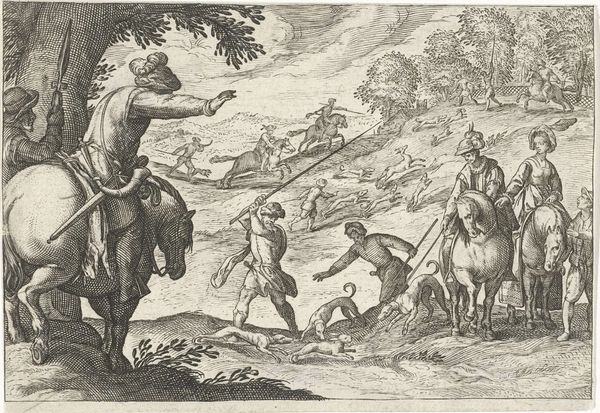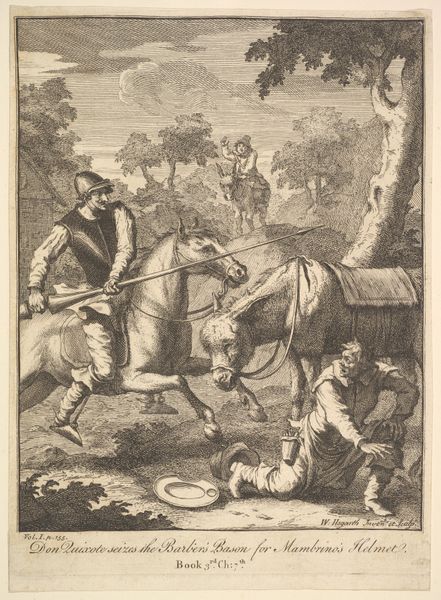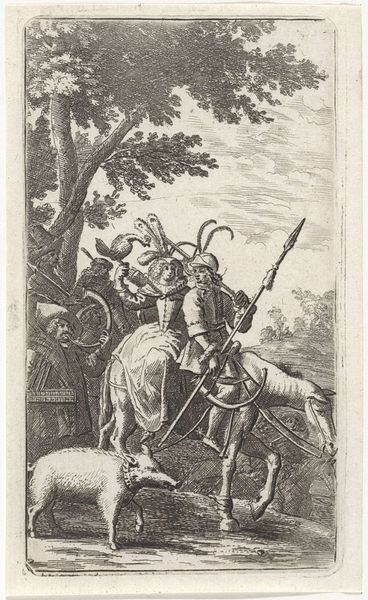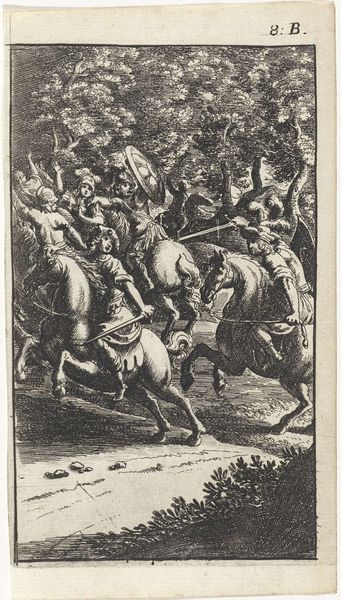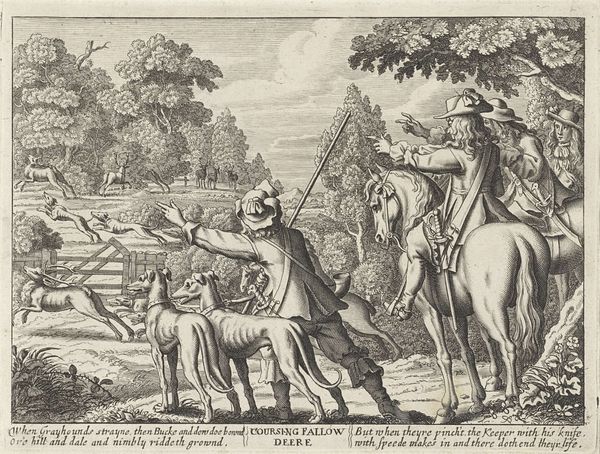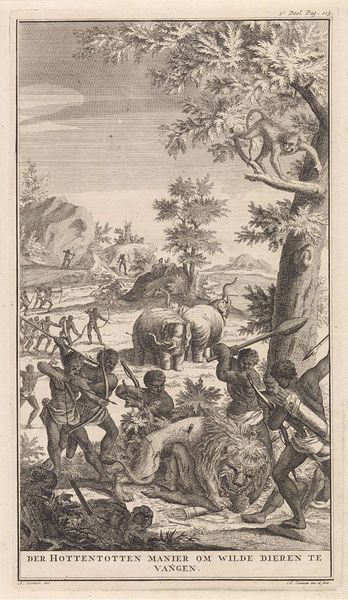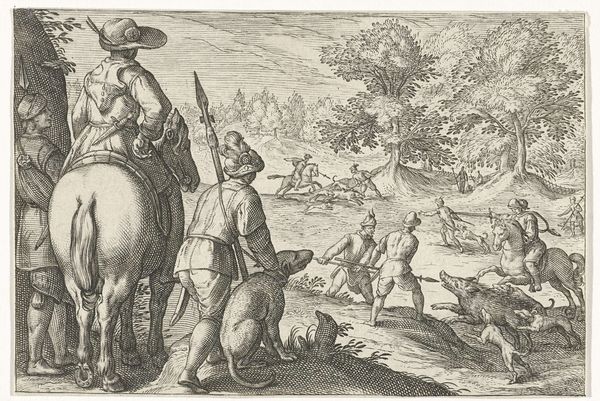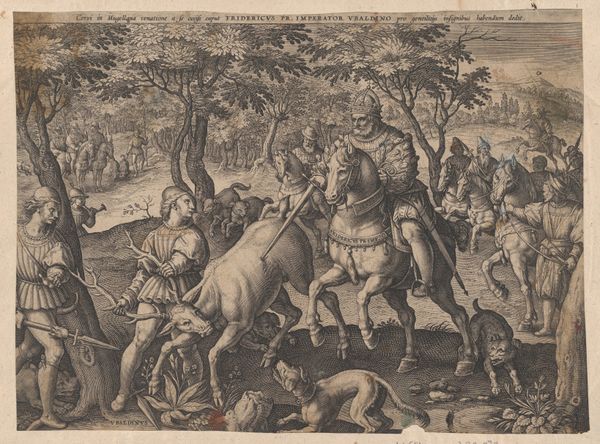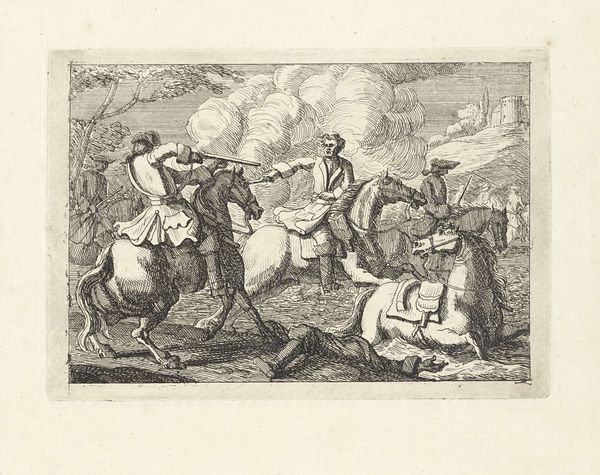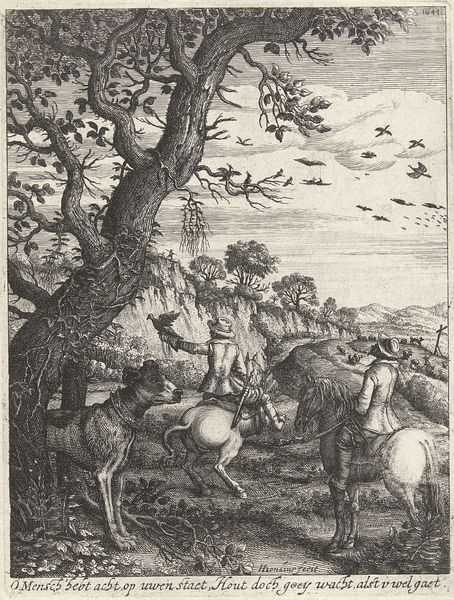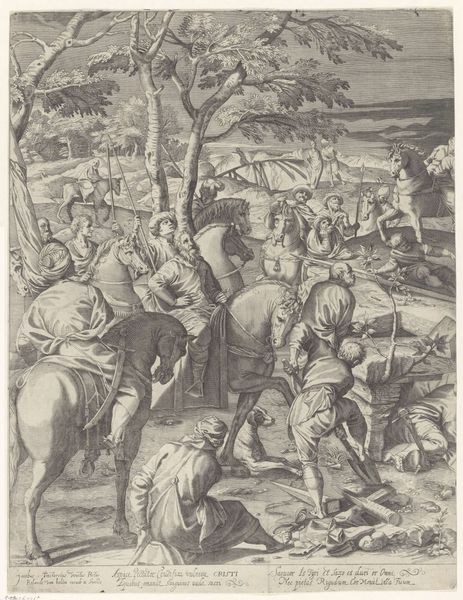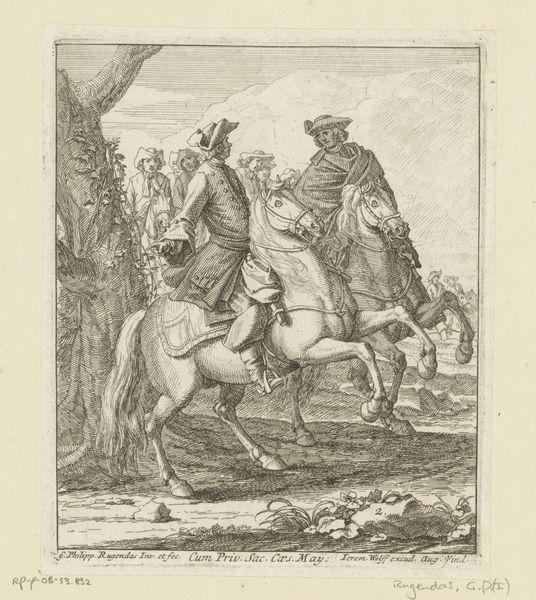
print, engraving
#
narrative-art
#
baroque
# print
#
figuration
#
line
#
history-painting
#
engraving
Dimensions: height 218 mm, width 171 mm
Copyright: Rijks Museum: Open Domain
Curator: It's hard to miss the energy bursting from Jacob Folkema’s engraving, "Gargantua en de Monnik," made between 1703 and 1767. It's currently housed right here in the Rijksmuseum. The scene practically leaps off the paper, doesn’t it? Editor: It's pure Baroque dynamism. The stark contrast created by the linear hatching and the subject matter’s intense narrative produces quite an enthralling image. Look at the distribution of the masses across the landscape. The figures fill up every plane, suggesting abundance and vitality. Curator: It is quite a scene. In many ways, the engraving presents the battle from Rabelais’s *Gargantua and Pantagruel*. This part depicts a monk that defends his abbey’s vineyard, showing both religious iconography and an appeal to humanism. What is so fascinating to me is to watch the layers of meaning accumulate in each line. Folkema takes visual shorthands, historical and religious allusions, and the cultural relevance to transmit a very vivid sense of cultural memory and historical narrative. Editor: I find that in isolating specific segments, you appreciate the full mastery of line. For instance, look at how Folkema differentiates the texture of the horse’s coat compared to the monk's robes through a deft variation of stroke and gradient. In addition to being narrative art, you could spend considerable time just appreciating how meticulously the hatching mimics visual information of the world itself. Curator: Agreed! Each tiny scratch creates volume and texture, giving presence to each character—I find it interesting how those features interact with cultural and historical notions of morality, power and social conflict in this period of time. It certainly helps illuminate how those ideas were digested and reformulated through visual culture. Editor: Absolutely, this provides more context for its semiotic program. Looking closer certainly opens new ways to appreciate both Folkema’s craft and Rabelais' narrative scope. Curator: Indeed. It serves as a poignant illustration of our interwoven histories, demonstrating how art mirrors, reinforces, and, at times, challenges what society finds valuable.
Comments
No comments
Be the first to comment and join the conversation on the ultimate creative platform.
